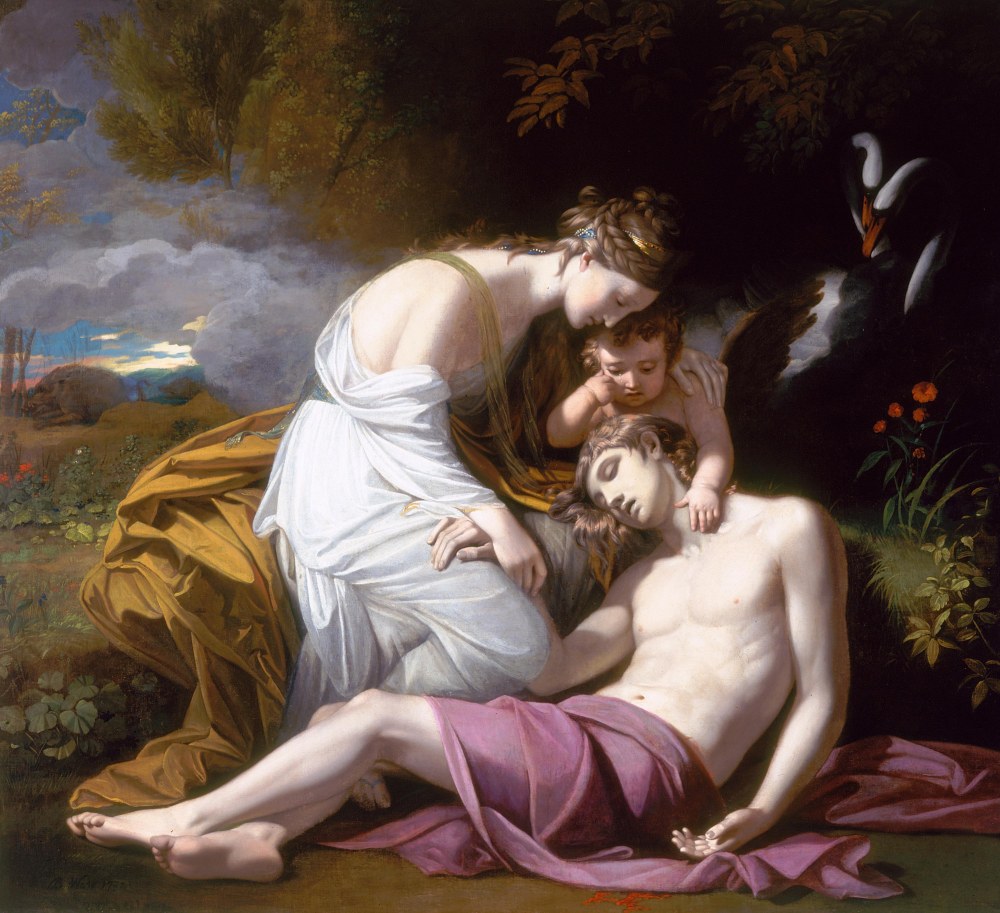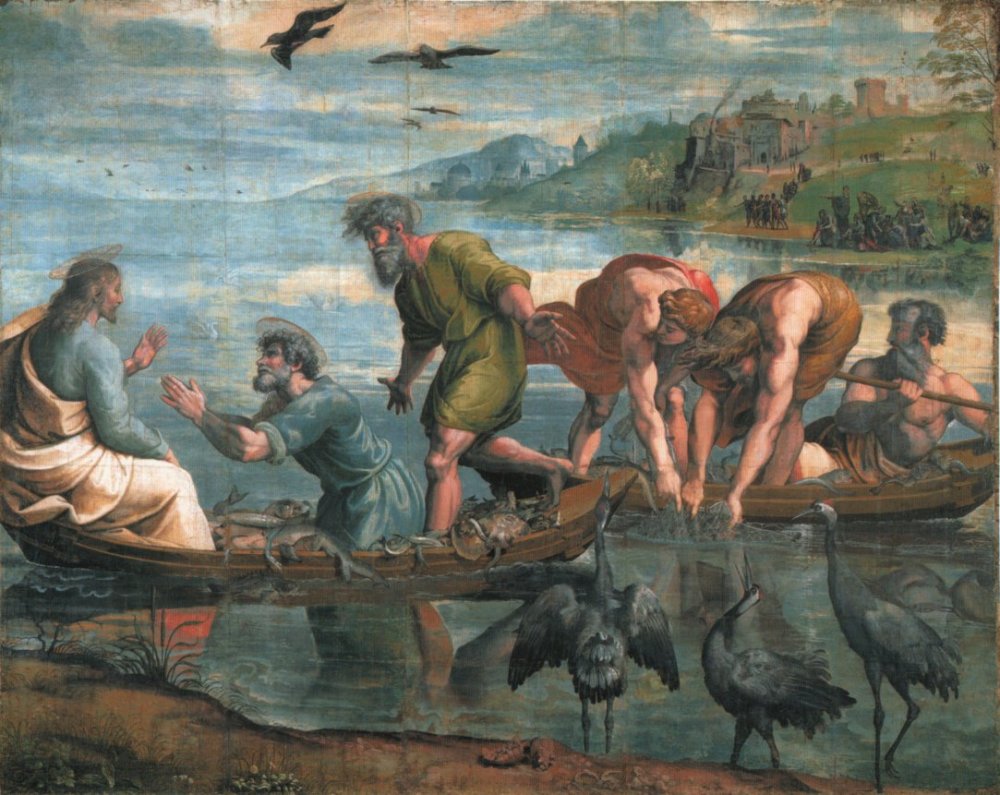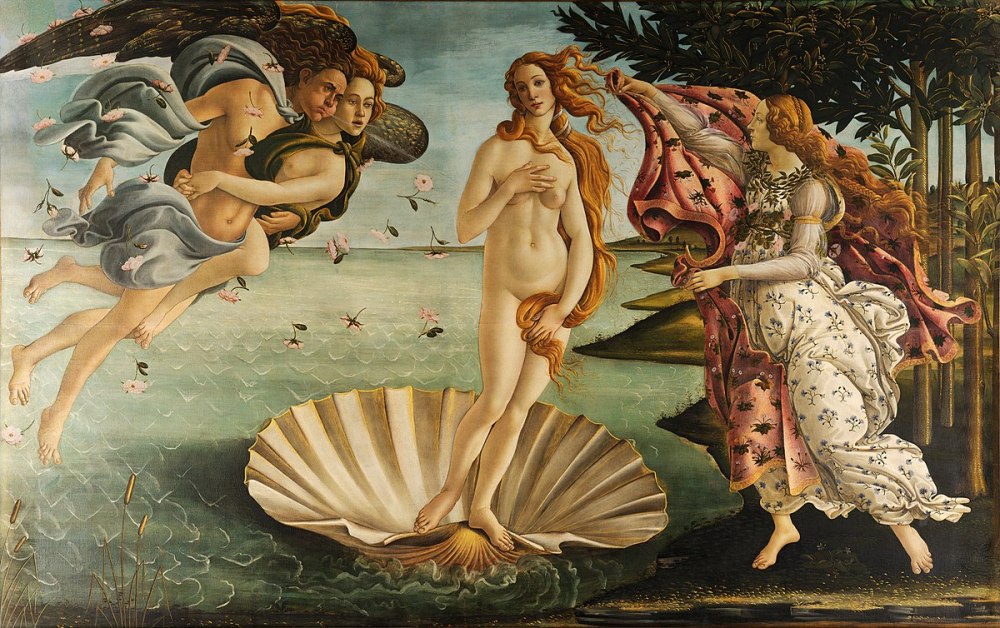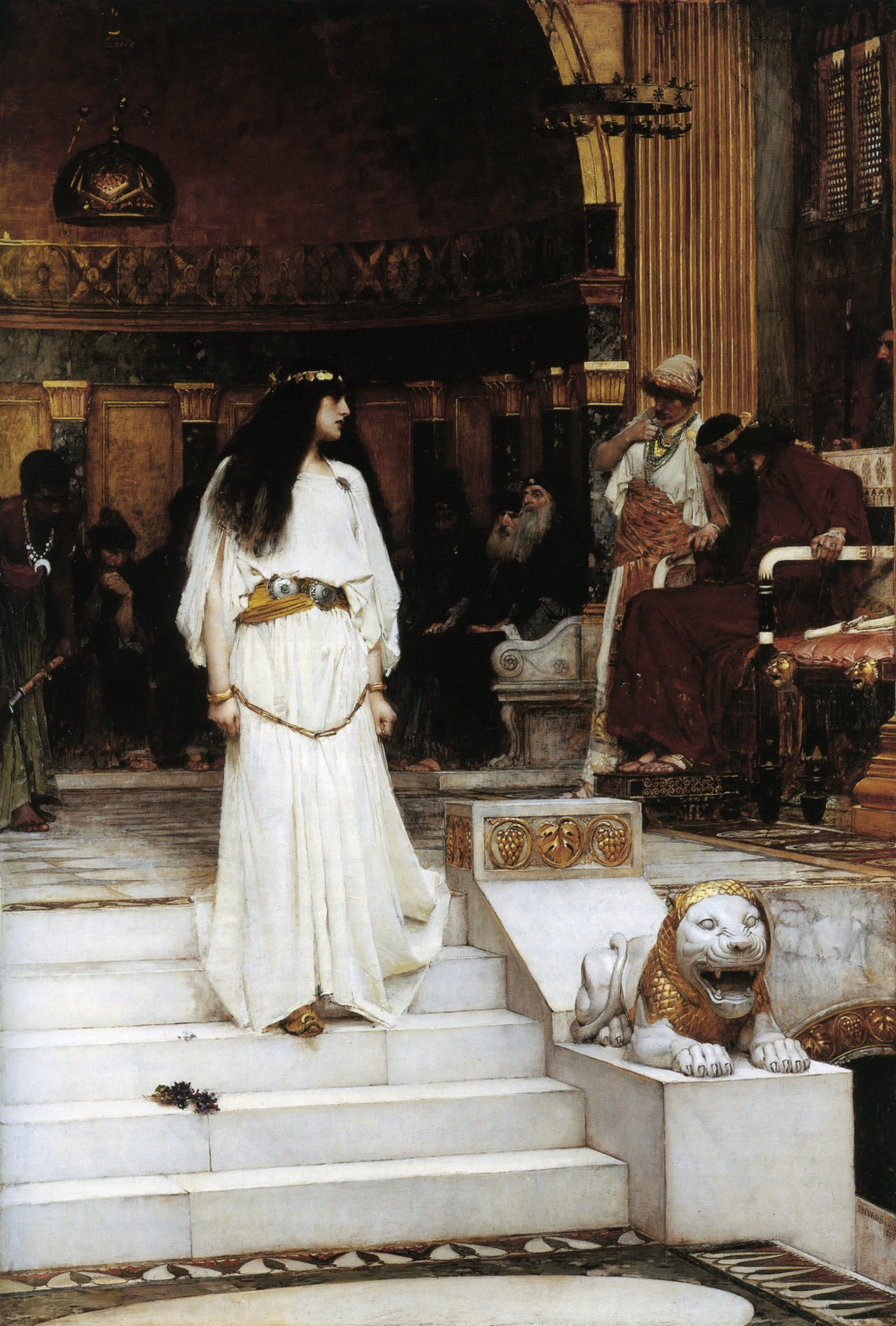Note: This article is not up to date. Some elements of analysis in this article will be revised in light of more recent studies. This article, in its current form, nevertheless offers some interesting insight and ideas. The author’s opinion, though, has changed on some important details, the most important of which being the racial identity of Mary Nazareth and Theos, Christ’s father.
The new understanding is that Mary of Nazareth is a Jew, while Mary Magdalene an Aryan, while both still elements of “The Triple Goddess.” Likewise the fathering Theos of Christ appears to be an Aryan. This is an understandable mistake in light of the common tendency to assume Christ’s father identical to Yahweh. The article in the link directly below explicates this more recent understanding: https://theapolloniantransmission.com/2019/06/17/the-racial-identity-of-christs-parents-part-ii-the-annunciation-proof/
Nietzsche suggested that Mary and Jesus correspond with the Venus and Adonis in the Adonis cult. This correlation is undoubtedly true. Indeed, archeological evidence suggests that Christianity was founded on an important center of the Adonis cult in Bethlehem.
The Church of the Nativity, a church built on the site of Christ’s nativity, in fact, understood to have been erected on the very same site as Adonis’ birth cave. The site of Christ’s Crucifixion, more ambiguously, is understood to share the site of a 2nd century temple to Venus. Yet this makes sense, as Venus is present in the famous death scene with Adonis, exactly as the two Marys are present at Christ’s crucifixion.

Notoriously tendentious Christian apologists suggest the cult of Adonis was attached to these sites as a plot to cover up the Christ cult and desecrate its holy sites. Yet this is far less likely. After all, the cult of Adonis predates the Christian cult by roughly 600 years. [1] It seems more natural to assume the Christ cult evolved from the Adonis cult. Indeed, it references this Adonis cult with its symbolism.
Already we understand Adonis as Semitic, more, as Jesus, an embodiment of Jewry, no different, in this way, than the figure of Yahweh or David. Adonai they called him in Judaism while understandably denying it the same figure. Though, as I have indicated, Adonis is himself just one of multiple Symbolic Synonyms, including Dumuzid, Tammuz, Bacchus, Osiris and Attis. All of these figures represent the Jewish God in a dying and rising form or expelled and returning form.
However Bacchus and Adonis share, at least because of their association with specific symbols, the greatest similarities to Christ. We have already and will continue to discuss these similarities, which should prove, beyond a shadow of a doubt, that Christ is derived from earlier dying and rising gods, Bacchus and Adonis most evidently.
To be certain, Christ’s mournful relationship to the Marys of the Bible most closely resembles the myth of Adonis and Venus. Venus we understand, at least in her chaste and celestial form, as an embodiment of Aryan womanhood. Here it’s my contention Christianity was developed as a subtler, more “mysterious” form of the Adonian and Bacchanal cults. The Bacchus and Adonis cults, on the other hand, were attractive, as the ancient sources describe, to women and particularly loose women or prostitutes. With Christianity there was an effort to broaden this market.
With Christianity one ostensibly created a more “moral” cult, that was not explicitly sexual or romantic. Nevertheless, it was equally deracinated and continued the central metaphor of a romance, however sublimated, between a Jewish or Semitic man and an Aryan female lover. Likewise it continued the Adonian metaphor of a Jewish man being born of an Aryan mother.
Hence the JEM here is deeper and more disguised than previous efforts to psychologically dominate the Aryan and gain ready access to his resources, whether wealth or wombs. For instance, for a great while it has never been suspected that Mary was intended as an Aryan woman. Indeed, the deeper sublimation of this theme doubtlessly made the cult more mysterious and more potent as well as increased a sheen of “Christian innocence.”
What are the clues though that Mary, generally assumed to be Jewish, is intended as an Aryan woman, outside of the fact that she is a clear symbolic synonym for Venus in the Adonis/Venus narrative? First, and most easily, Mary is Galilean.

Again, the region of Galilee is understood, both in David’s time and Christ’s as “Galilee of the Gentiles.” In fact, that Christ also hails from Galilee gave rise to the false belief among 19th century racialist writers, such as Émile-Louis Burnouf and Houston Stewart Chamberlain, that Christ was an Aryan figure himself. However, this theory is wrong. Regarding this likely entirely mythological figure of Christ, the JEM does not indicate him as Aryan, as this study explores. Christ instead is intended as the illegitimate son of a Jewish father, “God”, and an Aryan mother.
Perhaps the second suggestion that Mary is Aryan appears, as it does so frequently in contemporary JEM, in her name. Indeed, the name Mary seems to indicate in the Bible a sort of stock archetype. To wit, it is the most common name in the New Testament, possibly associated with as many as six personages[2]. The standard explanation is that Mary was simply a common name in Judea and surrounding districts.
Yet its reoccurrence with Jesus’ mother and with Mary Magdalene is too striking to be regarded coincidence. This is particularly true as we understand Christ as a mythical figure akin to Adonis and the symbols appearing in Christianity, carefully and precisely developed. Here, of course, it is noticeable that the Sacred Virgin Mother is given the same name as the prostitute, Mary Magdalene, implying they are one in the same.
As we verify that Mary is intended as an Aryan, this implies the idea that all Aryan women are prostitutes/shiksas/Aphrodite Pandemos or, at least, capable of becoming such. Again, we refer to the “Parabolists Law of Microcosm.”
Likewise, we assume that however popular the name Mary actually was in Judea during the period, its popularity was likely owed to the fact that it is a clear reference to Venus as we’ll now discover. In other words, its popularity and its use in the New Testament share the same purpose, to reference Venus. One important clue in verifying that Mary is, in fact,a symbolic synonym of Venus lies, predictably, in her “Holy Name.”

The Holy Name of Mary
The etymology of Mary is ostensibly ambiguous. Mary is the English form of Maria which comes from the New Testament Greek names Mariam (Μαριαμ) and Maria (Μαρια) which in turn come from the Hebrew name Miriam, מִרְיָם. The Modern Hebrew word Miriam מִרְיָם, as a verb, may mean “lift”, “raise” “elevate” or “rear.”
Nevertheless, theories of the name’s meaning are curiously various and include “sea of bitterness”, “rebelliousness,” and “wished for child.” However, “beloved” or “love” are generally accepted as the more likely meanings. Venus has a similar name meaning to the latter. Venus means “love, sexual desire; loveliness, beauty, charm; a beloved object.” It is understood to have derived from the root wen “to strive after, wish, desire.” Venus is, indeed, as we will remember, the Goddess of Love. Though, here we should note, the word for Mary, מְרִי , in Modern Hebrew is also the noun for “rebelliousness”, “disobedience” and “mutiny.”
What should strike readers right away, however, is the broad variety of these not entirely related possible name meanings for Mary. Yet as we will see, all of the name meanings may be related to Venus. Indeed, the name Mary may have been selected or even developed as a synonym for Venus precisely because it inherently contained so many possible references to the Goddess, as well as additional possible references, by its similarity to various words or names among which it appeared.
Again, here we understand that if esotericism is too obscure it loses its transmissibility. Thus, it is my contention, that the name Mary, and its various posited meanings, contains multiple references to Venus so that certain readers or listeners of the tale would consciously understand that Mary is absolutely a reference to Venus while others, possibly, would gain this understanding subconsciously. Indeed, the JEM we will explore, both ancient and contemporary, will corroborate the theory that Mary is certainly a reference to Venus.
The name meaning for Venus, “To strive after, wish, desire” may also correspond to the name meaning for Mary of “wished for child.” After all, in the most basic sense, desire as the sexual instinct and a “wished for child” are synonymous. Otherwise it may speak to some longing to have a child like Mary or the beautiful Aryan Venus.
Certainly this is an aspect of the Semitic Bride Gathering phenomenon. To wit, Jews reveal an instinct to develop some portion of their offspring more similar to an Aryan host populations whether as a means of racial camouflage, alliance building or as means of eugenic improvement through the discerning selection of higher quality stocks.
Similarly, the name meaning of “wished for child” may be a reference to the racial “youthfulness” of Aryans. In JEM, as mentioned, his theme will emerge. Again, we have the contrast of the Aryan Apollo, the Kouros, a God of Youth, with the racially aged Saturn.
From the possible meaning of Mary as “sea of bitterness,” likely, in my view, we see a reference to Venus’ famous birth from the ocean. Here Venus is presumed to be the “bitter” offspring of an overthrown Aryan nobility represented by the “castrated” Caelus. Bitterness though as well may refer more simply to salt water. Here again we gain the sense of salt as the Semitic, “jading” element.

Indeed, Hesiod derives the name Aphrodite, Venus’ Greek equivalent, from aphrós (ἀφρός) “sea-foam” guessing the name means “risen from the foam.” “Sea-foam” is itself vaginally suggestive. Thus with Aphrodite we find a metaphor not merely of water but frothing water which would, ostensibly, be befitting of a Goddess of Love.
This seemingly base characterization possibly points to a Semitic origin of the Goddess as a symbol describing an Aryan archetype. Regardless, we have already explicated “sea”, from the Hebraic perspective, as a symbol for the West, intermixture, and thus implicitly Aryan women. Again, yam, יָם, means “sea”, “ocean”, “lake” and “west.”
Marah, מָרָה , a location in the Hebrew Bible which the Israelites visit during the Exodus means “bitter” and is certainly related to the name Miriam or Mary. This seems certainly true so far as this name is believed to mean “sea of bitterness.” To wit, in Exodus, Marah is characterized by a bitter well of undrinkable water.

In the broader context of JEM, this well of undrinkable water is almost certainly a reference to local women. That they are “bitter” suggests they are already Semitized or Semitic. Hence in the case of Mary, in her two salient forms, as mother and whore, it suggests an Aryan woman impregnated by a Jewish God or an Aryan prostitute led by a Jewish God. In any case, it suggests an Aryan woman accessible to the “Jewish God.”
In order to make the waters drinkable, the Jewish God bid’s Moses to cast a log into the well. The act causes the waters to become sweet allowing the Israelites to drink. The log here in the Hebrew is es, עֵ֔ץ, meaning log or tree. In Modern Hebrew it means “tree”, “wood”, “timber”, “log”, “lumber” and “pole.” The log is certainly a reference to “Aryan stock.” We find another similar place name in Genesis 18, where the Jewish God visits Abraham in the form of three people.
There he comes upon Abraham by “the oaks of Mamre.” This study explicates how this episode suggests that the Jewish God has impregnated Abraham’s wife Sarah. Mamre, מַמְרֵ֑א, may translate as “it’s bitter.” It is close to Memer, ממר, meaning “bitterness”, “affliction”, “rancor” and “sorrow.” Doubtlessly the detail of oak trees here is not frivolously. Rather here we see the Jewish God visiting Aryan stocks.
In the Book of Ruth, the Biblical figure Naomi, נָעֳמִי, whose name may have meant “pleasant,” “winsome” or “lovely” and means “fine” in Modern Hebrew, will rename herself Marah, ostensibly, because of a difficult hand dealt to her in life. Thus we see in her character “Marah” or “bitterness” personified. This naming choice seems to only corroborate the well of Marah appearing in Exodus as an anthropomorphic symbol.
We also see expressed with Naomi two “moods” in a female character, as seen also in the “well of Marah” in Exodus. One mood, “Marah”, is hostile, the other, “Naomi”, pleasant, “drinkable”, perhaps sexually accessible. Interestingly, Naomi,נָעֳמִי, means “nude” in Yiddish.
Indeed, Naomi may represent something akin to an Aryan Venus or a celestial or Aryan form of the Triple Goddess. Marah on the other hand appears to represent the Semitized woman, a post-abduction Proserpina or Trivia in the Greco-Roman pantheon. “Difficultness” or “rebelliousness” becomes an attribute of Jewesses in JEM as this study explicates.
Certainly, since the noun for “rebelliousness” corresponds with the name Mary in Modern Hebrew, we have to take this name meaning for Mary seriously. “Rebelliousness” as a name meaning for Mary might be a reference to a rebellious, sexually available Aryan Venus, rebelling against an Aryan patriarchy as represented, for example, by the figure of Caelus.
Indeed, in the New Testament, Mary becomes a synonym for rebellion against Rome if including also Jewish “uncle Toms” like Herod or even the Pharisees whom would ostensibly, or at least exoterically, oppose the acquisition of Aryan women. Consider both Marys as well as characters. One is a prostitute, the other is a single, refuge mother. She is Aryan but with a child by a Jew. A modern Jewish TV producer could not have scripted them better. They are “modern,” liberated women. Here “Mary”, in these two forms, one simply the future of the other, is made the imitable model of this phenomenally impactful parable.
Though “rebelliousness” like “bitterness” seems to hint as well at an inherent antagonism between Aryan women and Jewish men, as the latter invariably understands himself as an opponent of the former’s race, whether consciously or unconsciously. Thus, in some sense, the partners of such an interracial couple come to understand themselves as enemies of one another, the woman a sort of captured, “rebellious” war booty and necessary breeding stock. Jacob’s Racheal, an Aryan figure, a coveter of her father’s idols, very much has this aspect.
Here we should consider the name Mary, representing a “bitter” or “salted” Venus, becomes especially apt in the context of the New Testament where the Jordan flows from Galilee and the lake town of Magdala, from whence Mary hails, into the salted, Dead Sea where alongside sits Judea. In fact, in Northern Syria and Mesopotamia, we find local versions of Venus that are river Goddesses as this study explicates, even, “river born.”
This or we find Greek myths featuring Aphrodite’s adventures along “Palestine’s stream”[3] were sex and Semitic pursuers are the subtext. It seems certain that the New Testament especially had the Northern Syrian Venus, Atargatis in mind. She was known especially as a fish and dove Goddess and these symbols feature centrally in Christianity. Hence here, again, we sense the division between an Aryan north, occupied by desirable breeding stock or “fish”, and a “dry” Jewish or Semitic south, occupied by hopeful “fishers.”
In my estimation, the name Mary is also likely related to Myrrha the mother of Adonis in the Greek myth. Myrrha was turned into a Myrrh tree before begetting Adonis. By the same token, of course, the mythical figure is doubtlessly related to the substance of Myrrh as an anointing perfume. Myrrh as a ritual anointing agent, as this study explicates, appears to operate in the Biblical JEM as a metaphor for sexually available, even vaginally lubricating Aryan women.
Here too, with the word Myrrh, from a Semitic source, the etymological root means “was bitter” or “bitterness.” The Hebrew is Mor or מוֹר. But, of course, as compelling as this evidence is, the even more compelling clues are narrative and even, as discussed, archeological. Indeed, we accept that the Christ myth derives especially from the Adonis and Venus myth thus it would naturally seem to follow that the figure of Mary would reference an equivalent figure in that myth.
It’s likely Myrrha, Adonis’ mother, is simply a cover name or symbolic synonym of Venus even if Venus also appears in the myth as Adonis’ lover. Indeed, some versions of the myth have Venus engineering the incestuous liaison whilst some, more directly, and perhaps more reliably, indicate Venus as both mother and lover of Adonis. Incest more generally is a theme in the Adonis myth. For instance, Myrrha will bear Adonis by the seed of her own father, Cinyras.

There are other clues connecting Mary to Myrrha. For instance, do the Myrrhbearers of the Orthodox Christian tradition, who are understood to have originally included Mary Magdalene, represent some vestige of the Adonian procession? It seems likely. Indeed, let’s remember the Adonian procession was understood by the Romans to have been comprised almost entirely of prostitutes and loose women. Thus Mary Magdalene, playing the role of the whore or “Venus Pandemos” would fit seamlessly in their train. Here again, let’s remember, we have as well, a reference to Bacchus’ Bacchantes or madwomen.

Though it does nothing to change our understanding of the names significance in the context of the New Testament, I will suggest one last possible inspiration for the name Mary, which would have only further “perfected” it as an esoteric symbol of multiple layers. I would propose as well that Mary may in fact have developed as a feminine form of Mars. Here we assume a close interaction between Latin speaking Romans and multilingual Jews where the name of this famous, primary Roman deity would have been well known.
Thus as Judith becomes a feminine form of Judah or Jew, and means Jewess, Mary indicates an “Aryaness” or female Aryan. Here we understand, again, as well, that Mars is a synonym for Aryan man. This, as this study explicates, is how he is understood in JEM. In any case, with Jesus and Mary, we theoretically encounter a scenario where Jesus is consorting with “Mar’s woman” or racial sister, “Mary”. Perhaps it is meaningful as well that the name Mars will appear as a masculine form of Maria, the Latin form of Mary, at least by the beginning of the Christian period.
There are more apparent layers here. The name Magdalene as it appears in the prostitute form of Mary, appears to have additional meaning. In my estimation, it seems to have been a reference to Herod’s wife Magdala Mariamme or Mariamme I. Like Mary, Mariamme is a form of the Hebrew Miriam. Certainly names or symbols that reference relatively contemporary figures or types is something we will encounter in the contemporary JEM we review. Likewise, as well, we will encounter names or symbols that contain multiple references, both contemporary and mythological.
In this figure of Magdala Mariamme, renown for her beauty, we find Mary, the mother, and Mary Magdalene, the prostitute, conflated. Indeed, Magdala Mariamme was accused of Herod of taking up relations with his conspicuously named uncle Joseph. Herod would eventually put both Mariamme and Joseph to death. Thus we sense the refugees Mary and Joseph appearing in the New Testament as inspired by or references to these figures.

Here though, certainly, through a careful naming tradition, the name Joseph carries as well all of its Hebrew Bible associations. We may find it interesting to learn that the word for Magdalene, מגדלן, in Hebrew also means “grower” and “breeder.” In light of other clues it seems yet another clue corroborating the Semitic Bride Gathering thesis.
Ostensibly, with this new additional subtext, the New Testament becomes, in part, a scathing polemic against groveling Jewish client Kings like Herod. There his unfaithful wife, now on the run, is lionized as the mother of God, whilst he made a clear villain. Though, on the other hand, esoterically, does Herod, a Jew, become “the God”, who is the true father of Jesus? Here Christ’s eventual moniker as “King of the Jews” may take on a whole new meaning. Perhaps, indeed, he was being indicated on one level as the son of Herod.
Indeed, according to the parable, we know Joseph is not the father. Likewise, the name Joseph is doubtlessly a reference to the earlier Biblical Joseph if also a supposed historical uncle of Herod. In other words, Joseph is a Messiah ben Joseph, a fundamentally Aryan figure, living not for himself, but rather to secure, ultimately, the Davidic line and the tribe of Judah. In this case, he is an actual cuckold carrying for a child produced by the “Jewish God.” Here again, with Christ, we see Moses or Adonis, the cuckoo bird, adopted and raised in the Aryan kingdom.
Was this client Jewish king Herod living it up in an Aryan “Galilee” amid beautiful Aryan women furnished by the occupying Roman Empire? It is, of course, a rhetorical question if we are to guess these ancient Jews have even one gene in common with present day Jews.
Herod himself will have another wife of the same name, also of great beauty. Thus even by this trait of beauty the name and figures of Mary, in this context, take on an Aryan sense. Indeed, the Herodian royal house appears as a family of “honorary Aryans,” upholding the rule and symbols of Rome. Again, that both the Biblical Mother Mary and Mary Magdalene of the Bible are from Galilee, a district Herod ruled along with Peraea, is also suggestive.
[1] Sappho references Adonis in a poem sometime between 630 and 570 BC. This is the earliest known referernce.
[2] Possible separate personages with the name Mary are 1) Mary, mother of Jesus, 2) Mary the wife of Cleopas, 3) Mary Magdalene, 4) Mary the sister of Lazarus, 5) Mary the mother of John Mark and 6) a Christian in Rome appearing in Romans 16:6. In most traditions at least three Marys are present at both Crucifixion and Resurrection.
[3] Ovid
Hey Mark. Is Mary an Aryan or a Jewess? Did you rescind this original interpretation now that Gabriel is the assumed father?
LikeLiked by 1 person
Irritatingly enough, that is true. I address it here. https://theapolloniantransmission.com/2019/06/17/the-racial-identity-of-christs-parents-part-ii-the-annunciation-proof/ Mary of Nazareth I believe to have been a Jew, Mary Magdalene a non-Jew, both “stages” of the Triple Goddess.
Of course my initial error was understandable in the sense that I assumed that Jesus’ father was Yahweh or a Jew, something generally or commonly assumed by studiers of the NT. However I had not yet applied my own understanding to the NT in a sufficiently careful way.
All of my writings will be revised to reflect this new understanding. Fortunately the error affects only a few passages. I am in the process of publishing my four books so have not been focused on revising Web content. Likewise I’ve placed this article in the back of the queue.
JEM in general is complex and it does not always feature a male Jewish God mating with an Aryan Goddess (though this is especially common). It does however reflect the notion that the Jewish gene is dominant, while the Aryan gene recessive both in the ancient and contemporary world.
LikeLiked by 1 person